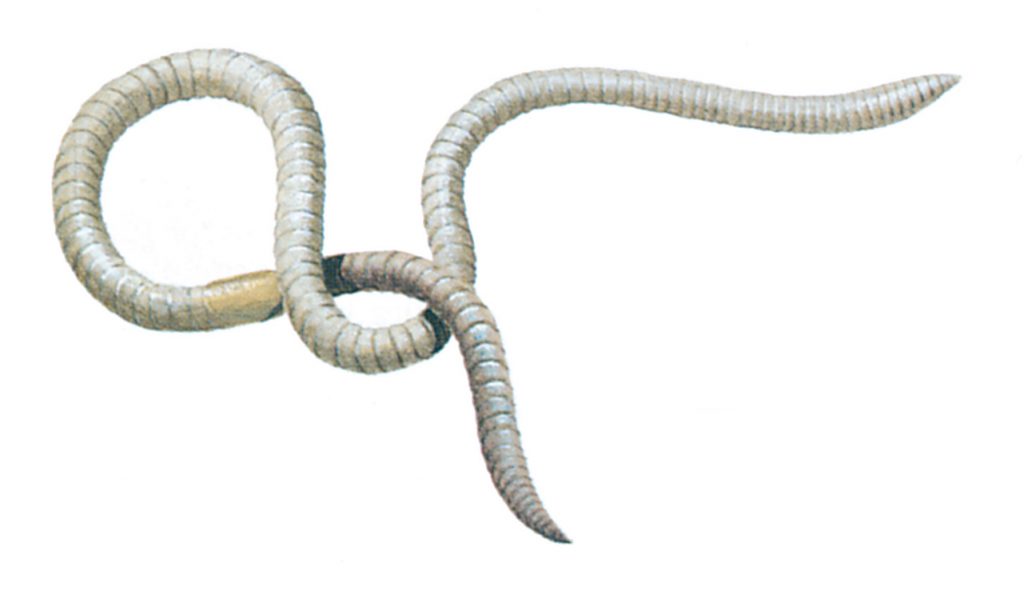(Latin: Allolobophora caliginosa)

The principal external characteristic of an earthworm is the division of the elongate body into a series of distinct rings or segments.
The skin of an earthworm is kept smooth and damp by mucus produced by glands in the skin, If, however, an earthworm is allowed to slip between the fingers it will prove to be very slightly rough, and if placed on a piece of paper one can hear a slight scratching sound as it moves.
In fact, each segment carries a few small bristles or chaetae and it is these that give the worm purchase as it moves through the earth.
In his book on earthworms published in 1881, Charles Darwin wrote ‘It may be doubted whether there are many other animals which have played so important a part in the history of the world as have these lowly organized creatures’.
Earthworms are important because their burrows provide the soil with ventilation and drainage, and also because as they eat their way through the soil they mix the mineral components from the subsoil with the organic matter near the surface.
Earthworms only occur indoors as chance visitors. In certain cases they may appear in the lavatory pan, where they are sometimes erroneously thought to be intestinal worms, but they can easily be distinguished by their possession of chaetae. However, when they are seen in the sewage system they must have come in through a break, so their presence there provides due warning that something is wrong.




